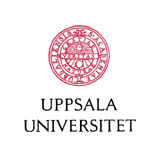|
The WINNER B3G System MAC Concept
Mikael Sternad
, Uppsala University,
Tommy Svensson
,
Chalmers U. of Technology and
Göran Klang
, Ericsson AB.
IEEE 64th Vehicular Technology Conference VTC 2006-Fall,
Montreal, September 2006.
© 2006 IEEE
-
Outline:
-
The European research project WINNER is a cooperation of 39 partners
from industry, operators, and academia, which is partly funded
by the European Union. It has the overall goal to develop a single
radio interface covering the full range from isolated hot spots
to wide area cellular scenarios by using different modes of a
common technology. It targets increased data rates, low latency,
and high system capacity based on adaptive transmission schemes,
flexible spectrum usage, relaying, and advanced multi-antenna
processing. The WINNER I project (2004-2005) evaluated
technologies and combined them into a system concept.
It forms the basis for the WINNER II project (2006-2007),
which aims at the design and detailed assessment of a beyond
3G system proposal.
The WINNER radio interface design is
aimed at attaining both high flexibility in terms of spectrum
use and fulfillment of user requirements and a high spectral
efficiency in different deployment and usage scenarios; two
goals that are often contradictory and difficult to combine.
The medium access control (MAC) system layer plays an
important role for fulfilling these goals. It performs tasks that
in existing systems are associated with Logical Link Control,
Medium Access Control and Radio Resource Control protocol (sub)layers.
The present paper focuses on the resource allocation problems
that are to be solved and outlines the time-frequency-spatial resource
units and control function blocks designed to solve them.
Detailed protocol aspects of the MAC system layer are not
discussed here, and are at present being developed within WINNER II.
-
Abstract:
- The European IST research projects WINNER
and WINNER II aim at developing a single new
ubiquitous radio access system concept that can be
adapted for use in a wide variety of mobile communication
scenarios, from wide area coverage to hot spots.
This cellular packet data system uses a multicarrier-based
air interface. Its medium access control (MAC) system
layer is designed for either FDD or TDD cellular transmission.
It supports adaptive transmission by tight interaction
with the physical layer, and provides efficient resource
allocation and scheduling within relay-enhanced cells.
It also supports separate allocation of antenna resources
per packet flow and furthermore provides support for
spectrum sharing and flexible spectrum use.
The paper outlines the resource allocation within a
super-frame and the use of either opportunistic
scheduling or diversity-based transmission within frames.
-
Related publications:
-
Later WINNER II design (ICT Mobile Summit 2008).
-
Downlink control overhead
in WINNER II design (VTC-Fall 2008).
-
Proc. of the IEEE (Dec. 2007)
invited paper on
adaptive transmission in beyond-3G wireless systems.
-
Spatial scheme adaptation framework for WINNER,
described at VTC 2006-Spring.
-
IST Mobile Summit 2005 paper
that describes adaptive TDMA/OFDMA downlink and
uplink transmission.
-
Source:
-
Pdf, (375K)
|
WINNER
|
The Wireless IP Project Homepage
|
Main
entry in list of publications
|
This material is posted here with permission of the IEEE.
Such permission of the IEEE does not in any
way imply IEEE endorsement of any of Uppsala University's
products or services.
Internal or personal use of this material is permitted.
However, permission to reprint/republish this material for
advertising or promotional purposes or for creating new collective
works for resale or redistribution must be obtained
from the IEEE by writing to [email protected].
By choosing to view this document, you agree to all
provisions of the copyright laws protecting it.
|

